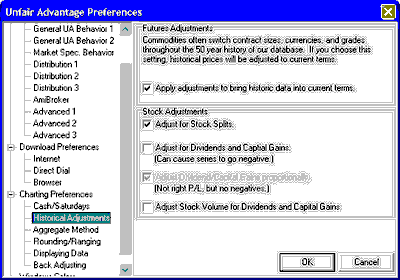The Historical Adjustments Screen:

The Historical Adjustment screen of Charting Preferences is very similar to the Historical Adjustments tab of Portfolio Settings. The one that controls your current chart depends upon how the chart is created. Charts made from a portfolio listing use the preferences that are defined for the specific portfolio. Charts made through the "New Chart" feature will use the specification on the Charting Preferences - Historical Adjustment screen. Either way, here's how the settings apply:
Futures Adjustments